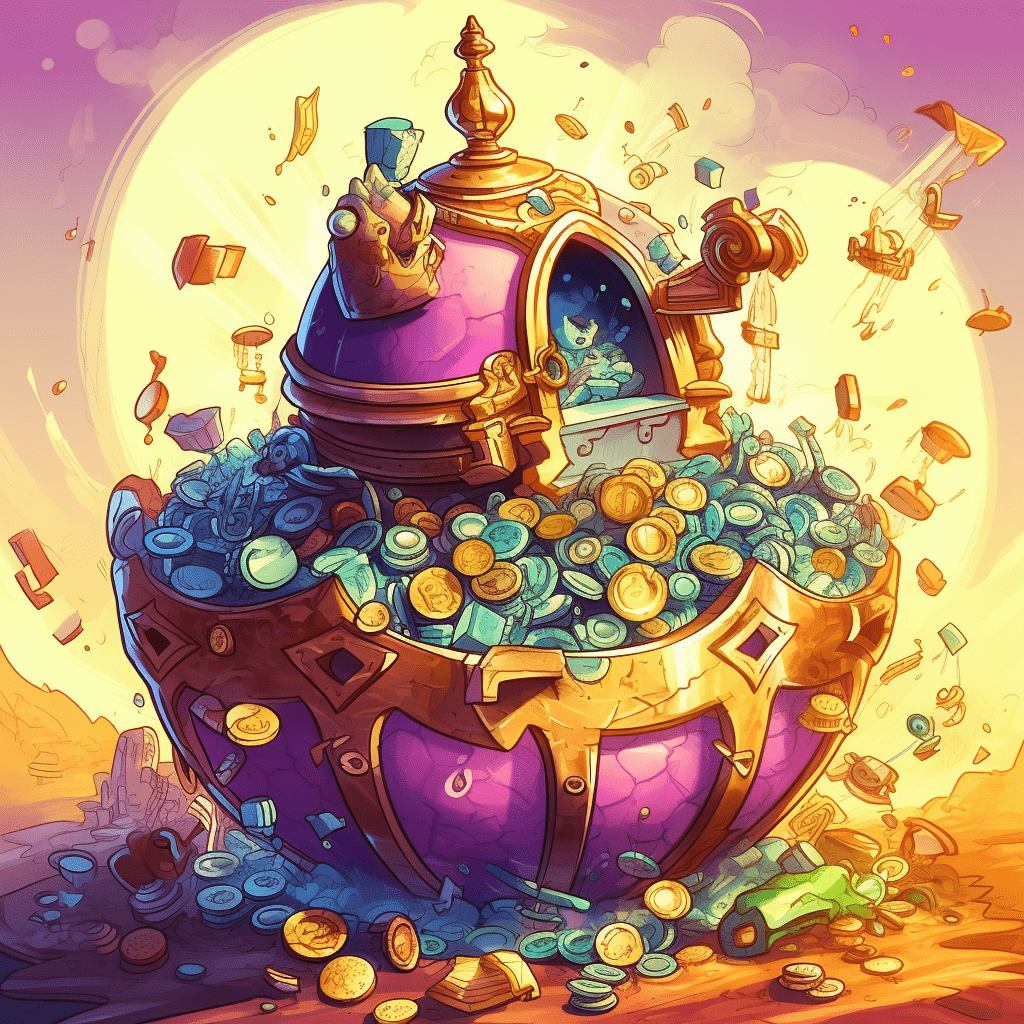As non-fungible tokens (NFTs) continue to gain popularity and reshape the digital landscape, it’s essential to understand the terminology used in NFT marketplaces. This quick reference guide aims to provide a comprehensive overview of the most commonly used terms, equipping newcomers with the knowledge to navigate the vibrant world of NFT marketplaces confidently.

Non-Fungible Token (NFT)
An NFT is a unique digital asset that represents ownership, authenticity, and scarcity of a specific item or piece of content. NFTs can encompass digital art, collectibles, music, and more, all with distinct attributes and metadata, ensuring each token’s uniqueness and rarity.
Blockchain
A blockchain is a decentralized, distributed digital ledger that records transactions and secures data using cryptography. NFTs are created, stored, and traded on blockchains such as Ethereum, Binance Smart Chain, Solana, and Flow, each with their advantages and disadvantages regarding fees, community support, and marketplace adoption.
Minting
Minting is the process of creating an NFT and adding it to the blockchain. During minting, digital assets are uploaded, assigned unique identifiers, and provided with metadata, ensuring their distinctiveness and scarcity.
Metadata

Metadata is the descriptive information associated with an NFT, including elements such as title, creator, description, and unique features. Metadata helps define the NFT’s uniqueness, adding value and appeal for potential buyers and collectors.
Gas Fees
Gas fees are transaction costs incurred when minting, transferring, or interacting with NFTs on certain blockchain networks like Ethereum. These fees compensate miners or validators who maintain the network’s security and process transactions.
Digital Wallet
A digital wallet is a software application that securely stores and manages cryptocurrencies, NFTs, and other digital assets on a specific blockchain network. To mint, buy, or sell NFTs, users must have a compatible wallet such as MetaMask, Trust Wallet, or Ledger.
Royalties
Royalties provide a way for creators to earn a percentage of the sale value when their NFT is sold or traded on secondary markets. By employing smart contracts, creators can set a predetermined royalty percentage, ensuring ongoing compensation for their work.
Provenance
Provenance refers to the ownership history and authentication of an NFT. Blockchain technology makes it possible to track provenance transparently and accurately, establishing an asset’s rarity, value, and legitimacy.
NFT Marketplaces
NFT marketplaces are digital platforms where users can mint, buy, sell, and discover non-fungible tokens. Examples of popular platforms include OpenSea, Rarible, and Foundation. Each marketplace caters to different niches, blockchain networks, and token types, offering a diverse range of options for NFT enthusiasts.
Floor Price
The floor price represents the lowest asking price for an NFT within a specific collection or project. It serves as a benchmark for the minimum value of an asset and can help potential buyers quickly gauge the entry price for a particular NFT.
Auction

Auctions are a popular sales mechanism in NFT marketplaces, where buyers place bids on assets during a defined period. Once the auction ends, the highest bidder wins and acquires the NFT. Auction dynamics, such as reserve prices, can be employed to protect the seller’s interests.
Dutch Auction
A Dutch auction is a specific type of auction where the listing price of an NFT starts high and gradually decreases over time. Buyers can choose to purchase the item at any time during the auction, but they must balance their willingness to pay against the potential for someone else to buy the asset first.
Bundles
Bundles are a feature in some NFT marketplaces that allows sellers to group multiple assets together for bulk sale. This can be an attractive option for buyers looking to acquire several related or high-value NFTs at once and often simplifies the purchasing process.
Listing and Offers
Listing refers to the act of putting an NFT up for sale on a marketplace, accompanied by the seller’s desired asking price. Conversely, offers are the bids that prospective buyers place on listed NFTs in an attempt to purchase them. Users should pay attention to both listing prices and offers when assessing market dynamics.
Primary and Secondary Sales
Primary sales occur when a creator initially mints and sells an NFT, often directly to a buyer. Secondary sales involve the buying and selling of NFTs between users, facilitated by an NFT marketplace. Investors should note the distinction between these sales, as royalties are often only paid to creators in secondary sales, and primary sales may have different pricing structures.
Whitelisting and Pre-sales
Whitelisting is a process of granting early access, exclusive privileges, or priority status to selected individuals for upcoming NFT drops or launches. Pre-sales are a related concept, where a select group of individuals can access and purchase items before they become available to the general public—both can be indicators of high demand or potential investment opportunities.
Now that you’re familiar with these commonly used terms in NFT marketplaces, your next step is to explore the world of non-fungible tokens and capitalize on the numerous opportunities the landscape offers. As a quick reference tool, this glossary should facilitate your understanding as you venture further into the NFT space.

In conclusion, navigating NFT marketplaces can be made accessible and enjoyable with a fundamental understanding of the terminology. By mastering the key terms presented in this quick reference guide, you’ll be empowered to explore, engage, and invest in the world of non-fungible tokens with confidence.
